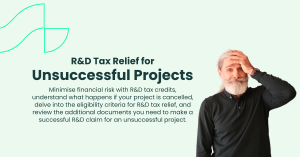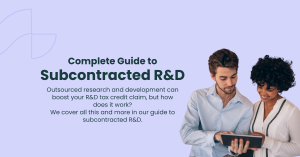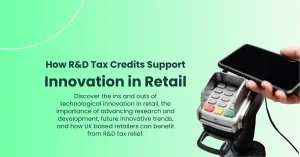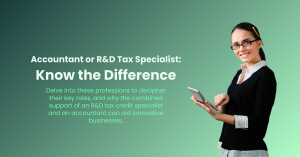Virtual Reality (VR) in education: Reshaping the learning landscape
31 January 2024

In our increasingly digital world, both businesses and institutions are considering how to embrace technology to enhance their services. Virtual Reality (VR) in education is unlocking incredible experiences for students that weren’t possible before. We’re moving past reciting textbooks and endless PowerPoint presentations. The integration of advanced technology into teacher’s lesson plans truly brings learning to life, expands the capabilities of the classroom and helps to keep engagement levels high. This article will provide use cases of technological learning experiences and define the advantages of VR in education.
Understanding Virtual Reality (VR)
Virtual Reality (VR) is a computer-generated environment that simulates a three-dimensional, interactive experience, often using specialised hardware like VR headsets. It immerses users in a three-dimensional virtual world, allowing them to interact with and navigate through the digital environment. These experiences can be abstract and fantastical but also very realistic such as exploring a city in another country.
Use of VR in education
When we inject technology into the curriculum, teachers are not limited to traditional resources to provide a breakthrough in learning in students with maintained engagement. They can use Virtual Reality to achieve and support:
Collaborative learning environments
Collaborative VR environments facilitate teamwork by allowing students to work together on projects, simulations, and problem-solving activities in a shared virtual space, enhancing interpersonal and collaborative skills. This is achievable on a global scale through VR, helping with language speaking. Classes can join up with students from any country, generating a growing cultural awareness.
Accessible school trips
School trips can put parents in a challenging financial situation leading to certain students being isolated from incredible educational opportunities. Through VR in the classroom, students can attend museums and ecosystems without long coach journeys and parent payment plans. VR goes further than bringing students to various cities, it can place them in key moments of time. Students can virtually visit historical sites, outer space, or microscopic realms, transcending physical constraints and providing access to environments that would otherwise be difficult or impossible to reach. Imagine how much it can help students understand the significance of historic events if they could immerse themselves in key locations from the past, seeing how people dressed at the time and interacted. This dynamic way of learning sparks curiosity and helps information retention.
Remote learning
It was the COVID-19 pandemic that suddenly made online learning the norm and many schools weren’t prepared for this. It was a challenging time for teachers, parents, and students. Statistics have shown that eLearning during the pandemic caused a decrease in mental health for students in primary, secondary, and higher education. This opportunity invites the use of VR not only for teaching materials but also for replicating the social classroom experience. Remote learning opens doors for students residing far away who aspire to attend a specific university. It is also valuable when school infrastructure requires improvement, necessitating closures, during hazardous weather conditions, or in the face of any future pandemics.
Streamlined professional training
There are frequent news articles about teaching recruitment and retention struggles which ultimately impact students’ learning. This is faced both in the UK and internationally. With gaps in teaching, we need to ensure trainee teachers are fully supported and prepared to be in the classroom ready to deliver quality teaching to students. That’s where VR can help. Virtual Reality can generate virtual classrooms, allowing teachers to practise various scenarios that will arise throughout their careers. This training helps them to be equipped to take a full-time position, ready to help students.
For students in higher education, VR can be used to enhance the skills needed for their future job roles. For example, medical students can practise surgeries in a safe and controlled environment.
Special education learning
VR can be tailored to accommodate different learning styles and support special education needs, providing personalised and adaptive learning experiences to meet the diverse requirements of individual students. Using technology helps us to keep schools inclusive while offering a personalised approach to teaching.
The benefits of VR in education
From the above use cases, it’s clear that VR is truly revolutionising the educational sector and inviting us to think about how else we can enhance learning experiences. There are numerous benefits of VR in education, including:
Boosts engagement levels
VR provides students with realistic and immersive simulations, enhancing engagement and understanding of complex concepts. There is a direct correlation between engagement levels and successful learning. It sparks creativity in a way that traditional reading and writing can’t do. This three-dimensional understanding helps students grasp complex subjects across various disciplines. Virtual Reality can assist in showing students how the learning is relevant to their lives. We’ll see higher attendance levels and better results in exams.
Simplified customisation
One of the reasons why VR boosts engagement levels is because teachers can use the technology to provide personalised learning experiences. Education doesn’t need a one-size-fits-all solution because we all learn in different ways. Teachers can gauge how best to share educational content and can tailor VR content to meet student needs.
Soft skills development
Virtual simulations offer a platform for students to practise and enhance soft skills like communication, teamwork, and problem-solving in realistic scenarios.
Greater accessibility for all
VR can be adapted to meet the needs of students with diverse learning abilities, providing inclusive and accessible educational experiences for everyone.
Examples of VR in education
The ways we can implement VR into the curriculum are endless to elevate learning experiences. In subjects like anatomy and biology, VR facilitates interactive simulations, enabling students to explore the intricacies of the human body. Physics and chemistry experiments come to life through virtual simulations, providing a safe and controlled environment for hands-on learning. VR also enables language students to engage in realistic conversations with virtual native speakers to enhance language skills.
Our predictions for the future of education
Anticipated advancements in education point toward technology playing an increasingly integral role, emphasising personalised and adaptive learning experiences. We will learn from the experience of remote learning during the pandemic to ensure that when we integrate technology into the classroom, we don’t neglect mental health and the vital social aspect of educational institutions. Artificial intelligence and machine learning are expected to play a significant role in tailoring education to individual student needs. Moreover, the rise of remote and hybrid learning models, coupled with the continued evolution of virtual reality and augmented reality applications, is likely to redefine the traditional classroom, making education more accessible, flexible, and engaging.
Final thoughts
In conclusion, the future of education holds exciting prospects driven by the relentless integration of technology and the commitment to personalised learning. As we embrace artificial intelligence, virtual reality, and adaptable learning models, the educational landscape is poised for a transformative shift. This evolution not only promises enhanced accessibility and flexibility but also underscores the dynamic potential of education to empower students with tailored, immersive, and future-ready learning experiences.
In simple terms, VR in education is transforming the act of learning from a passive experience into an active, immersive, and personalised journey, redefining how students interact with and absorb information.
Are you using technology to improve education?
If you are involved in improving education through a new or adapted solution or process, you could be eligible for R&D tax credits. The government actively encourages risk-taking for innovation with its R&D tax credit incentive. Through the tax benefit, you can offset the costs of your innovation project such as software costs, PAYE, National Insurance contributions, testing costs and more. We can create your R&D claim in under 2 weeks, maximising your entitlement and streamlining the entire process. Speak to our team today to check if you’re eligible for the unmissable growth opportunity.







